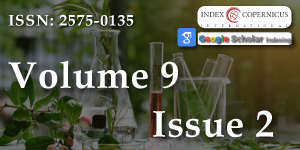The Discovery of a New Taxon of Phaeoisaria from Deadwood in China
Main Article Content
Abstract
A new fungus named Phaeoisaria diversa was found on deadwood in China. It was based on morphological characters and molecular phylogenetic analysis using DNA sequence data of the ITS region and fragments of rDNA LSU. It can be recognized by the diverse conidiogenous cells. The sequences of ITS, LSU, and TUB2 were obtained. It was described and illustrated in detail in this study. The type specimen (dried culture) and living cultures were deposited in the Herbarium of Henan Agricultural University: Fungi (HHAUF).
Article Details
Copyright (c) 2025 luo H, et al.

This work is licensed under a Creative Commons Attribution 4.0 International License.
1. Hoog GS de, Papendorf MC. Genus Phaeoisaria. Persoonia. 1976;8:407-14. Available from: https://archive.org/details/persoonia531635
2. Crous PW, Schumacher RK, Wingfield MJ, Lombard L, Giraldo A, Christensen M, et al. Fungal systematics and evolution: FUSE 1. Sydowia. 2015;67:110-3. Available from: https://www.verlag-berger.at/res/user/berger/media/2477.pdf
3. Réblová M, Seifert KA, Fournier J, Štěpánek V. Newly recognised lineages of perithecial ascomycetes: the new orders Conioscyphales and Pleurotheciales. Persoonia. 2016;37:57-81. Available from: https://doi.org/10.3767/003158516X689819
4. Crous PW, Wingfield MJ, Burgess TI, Carnegie AJ, Hardy GEStJ, Smith D, et al. Fungal Planet description sheets. Persoonia. 2017;39:625-715. Available from: https://doi.org/10.3767/persoonia.2017.39.11
5. Sandoval-Denis M, Guarro J, Cano-Lira JF, Sutton DA, Wiederhold NP, de Hoog GS, et al. Phylogeny and taxonomic revision of Microascaceae with emphasis on synnematous fungi. Stud Mycol. 2016;83:193-233. Available from: https://doi.org/10.1016/j.simyco.2016.07.002
6. Guarro J, Vieira LA, De FD, Gené J, Zaror L, Hofling-Lima AL. Phaeoisaria clematidis as a cause of keratomycosis. J Clin Microbiol. 2000;38(6):2434-7. Available from: https://doi.org/10.1128/jcm.38.6.2434-2437.2000
7. Doyle JJ, Doyle JL. Isolation of plant DNA from fresh tissue. Focus. 1990;12:13-5. Available from: https://www.scirp.org/reference/referencespapers?referenceid=633608
8. White TJ, Bruns T, Lee S. Amplification and direct sequencing of fungal ribosomal RNA genes for phylogenetics. In: Innis MA, Gelfand DH, Sninsky JJ, et al., editors. PCR Protocols: A Guide to Methods and Applications. New York: Academic Press; 1990;315-22. Available from: https://www.researchgate.net/publication/223397588_White_T_J_T_D_Bruns_S_B_Lee_and_J_W_Taylor_Amplification_and_direct_sequencing_of_fungal_ribosomal_RNA_Genes_for_phylogenetics
9. Fernández FA, Huhndorf SM. Teleomorph-anamorph connections: the new pyrenomycetous genus Carpoligna and its Pleurothecium anamorph. Mycologia. 1999;91(2):251-62. Available from: https://lutzonilab.org/publications/lutzoni_file213.pdf
10. Glass NL, Donaldson GC. Development of primer set designed for use with the PCR to amplify conserved genes from filamentous ascomycetes. Appl Environ Microbiol. 1995;61:1323-30. Available from: https://doi.org/10.1128/aem.61.4.1323-1330.1995
11. Ronquist F, Huelsenbeck JP. MrBayes 3: Bayesian phylogenetic inference under mixed models. Bioinformatics. 2003;19(12):1572. Available from: https://doi.org/10.1093/bioinformatics/btg180
12. Cavalcanti MDS, Milanez AI. Hyphomycetes from water and soil at the Dois Irmãos Forest Reserve, Recife, Pernambuco State, Brazil. Acta Bot Bras. 2007;21(4):859-61. Available from: https://doi.org/10.1590/S0102-33062007000400010
13. Castañeda-Ruiz RF, Velásquez S, Cano J, Saikawa M, Guarro J. Phaeoisaria aguilerae anam. sp. nov. from submerged wood in Cuba with notes and reflections in the genus Phaeoisaria. Cryptogamie Mycol. 2002;23(1):9-18. Available from: https://www.researchgate.net/publication/255172129_Phaeoisaria_aguilerae_anam_sp_nov_from_submerged_wood_in_Cuba_with_notes_and_reflections_in_the_genus_Phaeoisaria
14. Cheng X, Li W, Zhang TY. A new species of Phaeoisaria from intertidal marine sediment collected in Weihai, China. Mycotaxon. 2014;127(1):17-24. Available from: https://doi.org/10.3390/jof10080516
15. Hyde KD, Norphanphoun C, Abreu VP, Bazzicalupo A, Chethana KW, Clericuzio M, et al. Fungal diversity notes 603–708: taxonomic and phylogenetic notes on genera and species. Fungal Divers. 2017;87(1):1-235. Available from: https://snu.elsevierpure.com/en/publications/fungal-diversity-notes-603708-taxonomic-and-phylogenetic-notes-on
16. Liu JK, Hyde KD, Jones EG, Ariyawansa HA, Bhat DJ, Boonmee S, et al. Fungal diversity notes 1–110: taxonomic and phylogenetic contributions to fungal species. Fungal Divers. 2015;72(1):1-197. Available from: https://biblio.ugent.be/publication/7225021
17. Marin-Felix Y, Groenewald JZ, Cai L, Chen Q, Marincowitz S, Barnes I, et al. Genera of phytopathogenic fungi: Goph 1. Stud Mycol. 2017;86:99-216. Available from: https://doi.org/10.1016/j.simyco.2017.04.002
18. Mel'Nik VA. Phaeoisaria vietnamensis sp. nov. and Phaeoisaria clematidis (Hyphomycetes) from Vietnam. Mycosphere. 2012;3(6):957-60. Available from: https://www.mycosphere.org/pdf/MC3_6_No10.pdf

